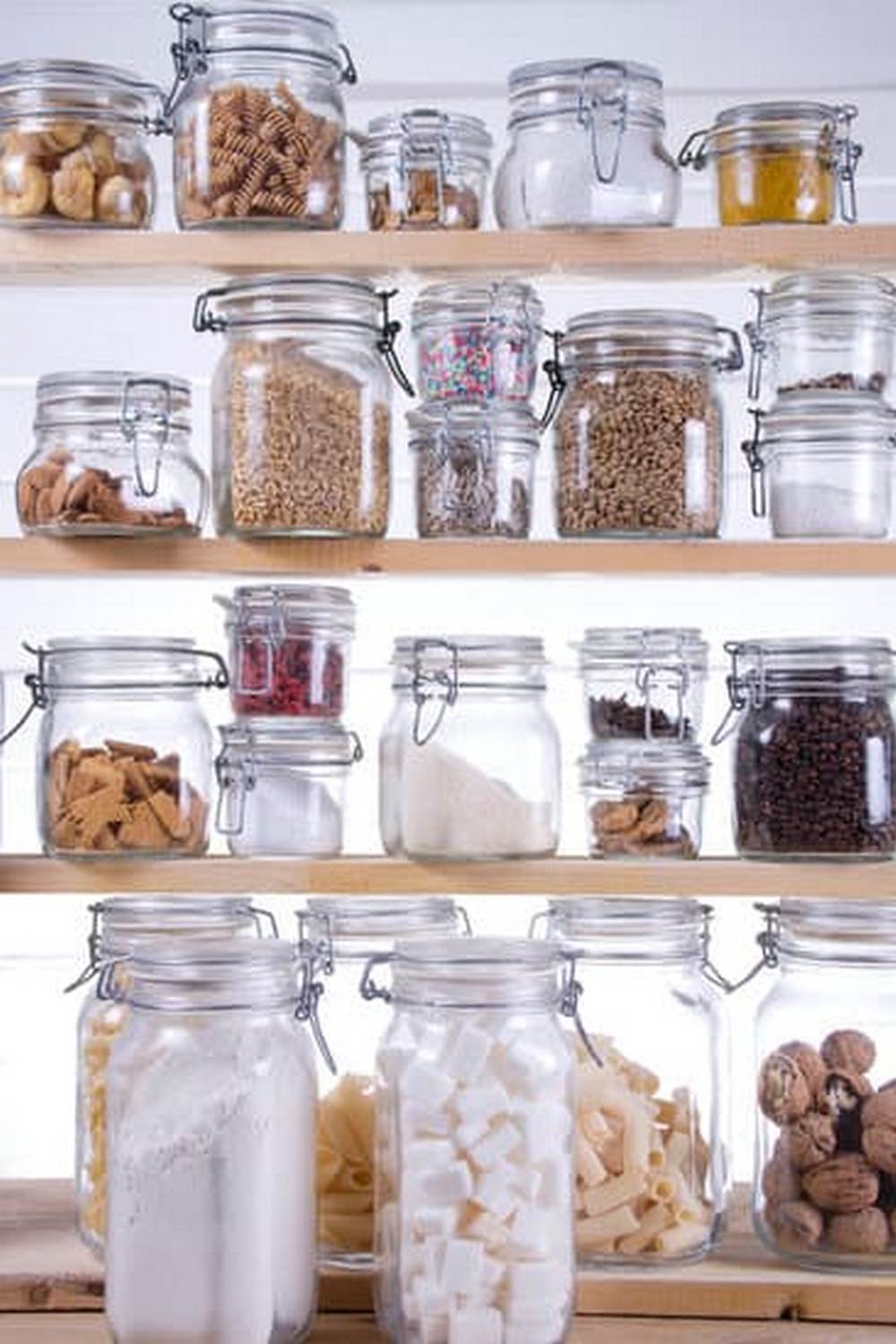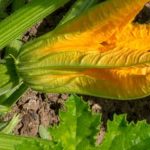Vegetable gardening in North Dakota offers a unique opportunity for residents to cultivate their own fresh produce right in their backyard. The state’s challenging climate and short growing season present both obstacles and opportunities for those interested in growing vegetables. With the right knowledge and techniques, gardeners in North Dakota can still have a successful harvest of various vegetables.
North Dakota’s variable climate, characterized by cold winters and hot summers, requires gardeners to be strategic in selecting the appropriate vegetables to grow. Understanding the local climate patterns and knowing the ideal planting times are crucial to a successful vegetable garden in this region. Despite these challenges, many dedicated gardeners have found ways to thrive in North Dakota’s conditions and enjoy a bountiful harvest of homegrown vegetables.
In this article, we will explore the specific considerations for vegetable gardening in North Dakota, including climate and growing season factors, recommended vegetables for this region, soil preparation and planting tips, pest control strategies, watering techniques, harvesting guidelines, community resources available for gardeners, as well as valuable insights from experienced vegetable growers who have conquered the unique challenges of gardening in North Dakota.
Whether you are a beginner or seasoned gardener, there is much to learn and be inspired by when it comes to cultivating a successful vegetable garden in North Dakota.
Climate and Growing Season in North Dakota for Vegetable Gardening
North Dakota’s climate can be a challenge for vegetable gardening, with its short growing season and harsh weather conditions. The state experiences cold winters and hot summers, making it essential for gardeners to carefully select the right vegetables that can thrive in these conditions. The typical last frost date in North Dakota varies depending on the region, generally falling between late May and early June, while the first frost occurs in September.
Despite the challenges posed by North Dakota’s climate, there are still several vegetables that do well in the state. Cool-season crops such as carrots, radishes, lettuce, and peas thrive in the spring and fall months when temperatures are cooler. Warm-season crops like tomatoes, peppers, squash, and beans can be grown successfully during the hotter summer months.
To ensure successful vegetable gardening in North Dakota, proper soil preparation is crucial. Gardeners should test their soil to determine its pH levels and nutrient content. Amending the soil with compost or organic matter can help improve soil structure and fertility.
It’s also important to plant vegetables at the appropriate depths and spacing to allow for proper root development and avoid competition for nutrients. By following these soil preparation and planting tips, gardeners can set their vegetables up for success throughout the growing season.
Best Vegetables to Grow in North Dakota
When it comes to vegetable gardening in North Dakota, choosing the right vegetables to grow is crucial for a successful harvest. Due to the state’s unique climate and growing conditions, certain vegetables thrive more than others in this region.
Some of the best vegetables to grow in North Dakota include cold-hardy crops like carrots, beets, kale, spinach, lettuce, radishes, peas, and broccoli. These vegetables can withstand the cooler temperatures and shorter growing season that are common in North Dakota.
Root vegetables such as carrots and beets are excellent choices for North Dakota gardeners due to their ability to tolerate the state’s heavy soils and fluctuating temperatures. Leafy greens like kale, spinach, and lettuce also perform well in North Dakota’s climate, making them popular choices among vegetable gardeners in the region.
Peas and broccoli are cool-season crops that can be planted early in the spring or late summer for a fall harvest, taking advantage of North Dakota’s short growing season.
In addition to these cold-hardy vegetables, tomatoes, peppers, cucumbers, and squash can also be successfully grown in North Dakota with proper care and attention. While these warm-season crops may require some extra protection from frost or colder temperatures, they can still thrive in North Dakota gardens with the right soil preparation and planting techniques.
By selecting a mix of cold-hardy and warm-season vegetables, North Dakota gardeners can enjoy a variety of fresh produce throughout the growing season.
Soil Preparation and Planting Tips for Vegetable Gardening
When it comes to vegetable gardening in North Dakota, proper soil preparation is key to a successful harvest. North Dakota’s climate can present challenges, so having nutrient-rich soil is essential for the health and growth of your vegetables. Before planting, it is important to test your soil’s pH levels and make any necessary adjustments to ensure optimal growing conditions for your crops.
Soil Testing and Amendment
One of the first steps in preparing your soil for vegetable gardening in North Dakota is to conduct a soil test. This will help you determine the current nutrient levels in your soil and identify any deficiencies that need to be addressed.
Based on the results of the soil test, you can amend the soil with organic matter such as compost or well-rotted manure to improve its texture and fertility. Adding organic matter can also help with moisture retention and drainage, which are vital factors for successful vegetable growth.
Choosing the Right Location
Selecting the right location for your vegetable garden is another important aspect of soil preparation. Choose a spot that receives at least 6-8 hours of sunlight per day and has good air circulation to prevent disease development. Avoid areas with poor drainage or low-lying spots that may become waterlogged during heavy rainfalls. Additionally, consider the proximity to water sources for irrigation purposes, especially during dry spells in North Dakota.
Planting Tips
When planting your vegetables in North Dakota, be mindful of spacing requirements to allow for proper airflow between plants and prevent overcrowding. Follow recommended planting depths and spacing guidelines provided on seed packets or plant labels. Consider using raised beds or containers if you have limited space or poor soil quality in your area. Mulching around plants can help retain moisture, suppress weeds, and regulate soil temperature during fluctuating weather conditions typical in North Dakota.
Pest Control and Disease Management in North Dakota Vegetable Gardens
When it comes to vegetable gardening in North Dakota, dealing with pests and diseases is an inevitable challenge that gardeners face. However, there are several strategies that can be implemented to help manage these issues and protect your precious crops.
Preventative Measures
One of the most effective ways to control pests and diseases in your North Dakota vegetable garden is by implementing preventative measures. This includes practices such as rotating crops each year, practicing proper spacing between plants to improve air circulation, and using pest-resistant varieties whenever possible. Additionally, keeping your garden clean and free of debris can help reduce the risk of disease outbreaks.
Natural Predators
Another eco-friendly approach to pest control in your North Dakota vegetable garden is by attracting natural predators. Beneficial insects like ladybugs, lacewings, and parasitic wasps can help keep pest populations in check. You can also introduce predator insects such as praying mantises to your garden to prey on harmful pests like aphids or caterpillars.
Organic Solutions
For those who prefer organic options for pest and disease management in their North Dakota vegetable garden, there are several products available. Neem oil, insecticidal soaps, and plant-based repellents can be effective against common garden pests without harming beneficial insects or the environment.
It’s essential to regularly monitor your plants for any signs of infestation or disease so you can take action promptly. By combining these methods and staying vigilant, you can help protect your vegetables and ensure a bountiful harvest in your North Dakota garden.
Watering and Irrigation Techniques for Successful Vegetable Gardening
When it comes to vegetable gardening in North Dakota, one of the most crucial aspects to consider is proper watering and irrigation techniques. Due to the state’s climate, which is characterized by hot summers and cold winters, it is essential to ensure that your vegetable garden receives an adequate amount of water throughout the growing season. North Dakota typically experiences less rainfall during the summer months, making it necessary for gardeners to supplement with irrigation.
One effective watering technique for vegetable gardening in North Dakota is drip irrigation. Drip irrigation delivers water directly to the base of plants, minimizing water waste through evaporation or runoff. This method also helps prevent moisture-related diseases by keeping foliage dry.
Additionally, utilizing a soaker hose can be beneficial, especially for row crops like lettuce or carrots. Soaker hoses deliver a slow, steady stream of water right to the roots of plants, promoting deep root growth and reducing water loss.
Another important aspect to consider when watering your vegetable garden in North Dakota is timing. It is best to water early in the morning to allow plants ample time to absorb moisture before the heat of the day sets in. Avoid watering in the evening as dampness overnight can lead to fungal diseases.
Consistent monitoring of soil moisture levels is key, especially during hot and windy periods when plants may require more frequent watering. By implementing these watering and irrigation techniques, you can set yourself up for a successful vegetable garden despite the challenges posed by North Dakota’s climate.
| North Dakota Climate | Hot Summers and Cold Winters |
|---|---|
| Rainfall | Less rainfall during summer months |
| Watering Techniques | Drip irrigation, soaker hoses |
Harvesting and Preserving Vegetables in North Dakota
Harvesting fresh vegetables from your garden is one of the most rewarding experiences for any vegetable gardener in North Dakota. Knowing when and how to harvest your crops can make a significant difference in the taste and quality of your produce. Here are some tips on harvesting and preserving vegetables in North Dakota:
- Harvesting at the right time: Different vegetables have different cues for optimal harvesting. For example, tomatoes should be picked when they are firm and fully colored, while leafy greens like lettuce should be harvested before they bolt. Refer to seed packets or gardening guides for specific guidelines.
- Preserving the harvest: To extend the shelf life of your freshly harvested vegetables, consider different preservation methods such as freezing, canning, pickling, or drying. Freezing is a convenient way to preserve a variety of vegetables like peas, green beans, and bell peppers. Canning works well for tomatoes, cucumbers (for pickles), and other high-acid vegetables.
- Using root cellars: In North Dakota’s harsh winters, having a root cellar can be beneficial for storing root vegetables like potatoes, carrots, and beets. A root cellar provides a cool and humid environment that helps keep these veggies fresh for an extended period.
When it comes to preserving your harvest in North Dakota, it’s essential to plan ahead and have the necessary equipment on hand. Whether you prefer fresh produce or enjoy stocking up for the winter months, knowing how to properly harvest and store your vegetables will ensure that you can enjoy the fruits of your labor throughout the year.
Remember that successful vegetable gardening in North Dakota not only involves planting and nurturing your crops but also effectively harvesting and preserving them for later consumption. By following proper techniques for harvesting and preservation, you can savor the flavors of your homegrown vegetables long after the growing season has ended.
Community Resources and Support for Vegetable Gardeners in North Dakota
One of the key factors in successful vegetable gardening in North Dakota is having access to community resources and support. Luckily, there are several organizations and groups dedicated to helping vegetable gardeners in the state thrive. Here are some valuable resources that can provide assistance and guidance:
- North Dakota State University Extension: The Extension service offers a wealth of information on vegetable gardening, including specific recommendations for North Dakota gardeners. They provide research-based advice on soil health, pest management, and other important topics.
- Master Gardener Programs: The Master Gardener programs in North Dakota are a fantastic resource for both beginner and experienced gardeners. These programs offer training, workshops, and opportunities to connect with other vegetable gardeners in the community.
- Local Garden Clubs: Joining a local garden club can be a great way to meet fellow garden enthusiasts, share tips and experiences, and even swap seeds or plants. Many garden clubs also organize group gardening projects or visits to gardens of interest.
In addition to these formal organizations, social media platforms like Facebook groups or online forums can also provide a sense of community for vegetable gardeners in North Dakota. These virtual spaces allow for easy sharing of advice, photos, and encouragement among members who share a passion for vegetable gardening.
Whether you are looking for expert advice from extension services or the camaraderie of fellow gardeners in a local club, utilizing these community resources can greatly enhance your vegetable gardening experience in North Dakota. By tapping into the knowledge and support available through these networks, you can increase your chances of success and grow bountiful harvests year after year.
Ultimately, connecting with others who share your interest in vegetable gardening can not only expand your skills and knowledge but also foster a sense of belonging within the vibrant gardening community of North Dakota. Don’t hesitate to reach out and take advantage of these valuable resources as you embark on your own vegetable gardening journey in this beautiful state.
Success Stories and Tips From Experienced North Dakota Vegetable Gardeners
Vegetable gardening in North Dakota may come with its challenges, but with the right knowledge and dedication, it can also be a rewarding experience. As shared by experienced vegetable gardeners in the region, there are some key tips and success stories that can inspire and guide newcomers in their own gardening endeavors.
One important tip from seasoned vegetable gardeners in North Dakota is to pay close attention to the climate and growing season. Understanding the unique conditions of the area will help gardeners choose the best vegetables to grow and implement proper planting techniques. Moreover, these experienced gardeners emphasize the significance of soil preparation, ensuring that it is suitable for healthy plant growth.
In addition to practical tips, success stories from North Dakota vegetable gardeners serve as motivation for those looking to start their own gardens. From mastering pest control and disease management to perfecting watering and irrigation techniques, these stories demonstrate that perseverance and a love for gardening are essential ingredients for success in vegetable gardening in North Dakota.
So, whether you are a beginner or a seasoned gardener, embracing the challenges and joys of vegetable gardening in North Dakota can lead to a bountiful harvest and a sense of accomplishment.
Frequently Asked Questions
What Vegetables Grow Well in North Dakota?
Various vegetables grow well in North Dakota due to its unique climate and growing conditions. Some examples include potatoes, carrots, peas, beans, squash, cucumbers, lettuce, and radishes. These vegetables thrive in the cooler temperatures and shorter growing season of North Dakota.
When Should I Start My Garden in North Dakota?
In North Dakota, the best time to start your garden typically depends on the last frost date in your specific region. Generally, gardeners aim to start planting seeds indoors around March or April to prepare for transplanting them outdoors after the last frost. Planning ahead and knowing your local frost dates is crucial for a successful gardening season.
When Should I Plant Tomatoes in North Dakota?
Tomatoes are warm-season plants that require consistent warmth to thrive in North Dakota’s climate. It is recommended to plant tomatoes outdoors after the danger of frost has passed, usually around late May or early June in most parts of the state.
By starting seeds indoors 6-8 weeks before transplanting, you can ensure a healthy tomato harvest later in the season.

If you’re looking to get into vegetable gardening, or are just looking for some tips on how to make your current garden better, then you’ve come to the right place! My name is Ethel and I have been gardening for years. In this blog, I’m going to share with you some of my best tips on how to create a successful vegetable garden.





